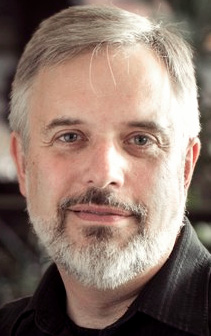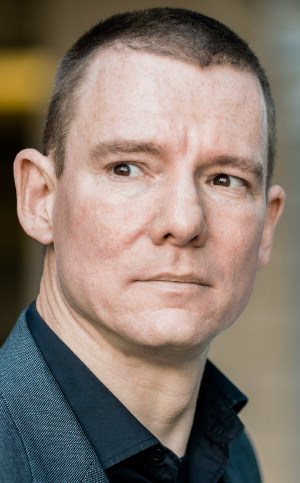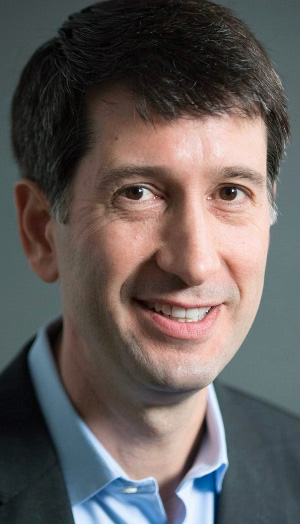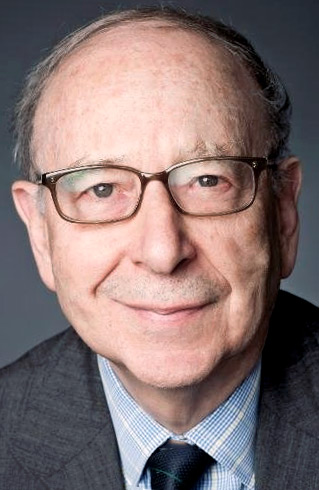

Harvard Business Review just ran an interesting article on the information security aspects of Internet of Things (IoT). Based on the storyline, the smart city initiatives are doomed to fail unless the security of the IoT devices and the systems will be improved. While security of the digital society is obviously a key concern, I am not entirely convinced that relying on the security of individual devices and systems is the best course of action. more
 As the roll out of FttH remains a slow process, it is no wonder that more and more people are looking towards mobile as a potential alternative. Obviously, mobile communication has improved over recent years in providing excellent access to broadband; and it has also become more affordable. At the same time, there is the fabulous hype about 5G, and the PR and media machines of the vendors involved make you believe that this will become a real competitor to the slow moving FttH developments. more
As the roll out of FttH remains a slow process, it is no wonder that more and more people are looking towards mobile as a potential alternative. Obviously, mobile communication has improved over recent years in providing excellent access to broadband; and it has also become more affordable. At the same time, there is the fabulous hype about 5G, and the PR and media machines of the vendors involved make you believe that this will become a real competitor to the slow moving FttH developments. more
 Part 2: How do I choose the right option for my brand? In my previous article, I discussed the question of how to represent .brand domains in advertising. As you can imagine, it's a balancing act -- stimulating awareness of the domain, creating the desired customer behavior of the future using .brands, whilst ensuring that we are considerate to the fact that .brands are yet to hit mainstream awareness. Sounds simple right? more
Part 2: How do I choose the right option for my brand? In my previous article, I discussed the question of how to represent .brand domains in advertising. As you can imagine, it's a balancing act -- stimulating awareness of the domain, creating the desired customer behavior of the future using .brands, whilst ensuring that we are considerate to the fact that .brands are yet to hit mainstream awareness. Sounds simple right? more
 Do you have ideas about DNSSEC or DANE that you would like to share with the wider community? Have you created a new tool or service? Have you found a way to use DNSSEC to secure some other service? Do you have new statistics about the growth or usage of DNSSEC, DANE or other related technology? If so, and if you will be in Johannesburg, South Africa, for ICANN 59 in June 2017 (or can get there), please consider submitting a proposal to speak at the ICANN 59 DNSSEC Workshop! more
Do you have ideas about DNSSEC or DANE that you would like to share with the wider community? Have you created a new tool or service? Have you found a way to use DNSSEC to secure some other service? Do you have new statistics about the growth or usage of DNSSEC, DANE or other related technology? If so, and if you will be in Johannesburg, South Africa, for ICANN 59 in June 2017 (or can get there), please consider submitting a proposal to speak at the ICANN 59 DNSSEC Workshop! more
 I saw a poster on the London Underground yesterday, and as is often the case it got me thinking about the parallels with telecoms. The poster explains the peak and off-peak fare structure for tube travel. The purpose of this pricing system is to manage the relationship between supply and demand in a system that is capacity constrained. Over short and medium timescales the supply is essentially fixed, and demand can oversaturate that supply. more
I saw a poster on the London Underground yesterday, and as is often the case it got me thinking about the parallels with telecoms. The poster explains the peak and off-peak fare structure for tube travel. The purpose of this pricing system is to manage the relationship between supply and demand in a system that is capacity constrained. Over short and medium timescales the supply is essentially fixed, and demand can oversaturate that supply. more
 On Wednesday April 26, 2017, Afghanistan had its first two-day long school on Internet Governance. The event was organized by a home grown civil society by the name of National IT Professionals Association of Afghanistan (NITPAA). Afghanistan School on Internet Governance (AfSIG) is a new initiative by a group of volunteers at NITPAA, who worked tirelessly for months to put up an event that comprised of speakers from multiple organizations and multiple stakeholders across the country. more
On Wednesday April 26, 2017, Afghanistan had its first two-day long school on Internet Governance. The event was organized by a home grown civil society by the name of National IT Professionals Association of Afghanistan (NITPAA). Afghanistan School on Internet Governance (AfSIG) is a new initiative by a group of volunteers at NITPAA, who worked tirelessly for months to put up an event that comprised of speakers from multiple organizations and multiple stakeholders across the country. more
 While the U.S. Environmental Protection Agency (EPA) has been making news as the result of controversial changes brought about under the new Trump administration -- including the planned removal of "several agency websites containing detailed climate data and scientific information" -- the EPA also has generated some (lesser-known) domain name news: The agency won a decision under the Uniform Domain Name Dispute Resolution Policy (UDRP) for the domain name noattacks.org. more
While the U.S. Environmental Protection Agency (EPA) has been making news as the result of controversial changes brought about under the new Trump administration -- including the planned removal of "several agency websites containing detailed climate data and scientific information" -- the EPA also has generated some (lesser-known) domain name news: The agency won a decision under the Uniform Domain Name Dispute Resolution Policy (UDRP) for the domain name noattacks.org. more
 Today in Indonesia, media leaders gathered at UNESCO's World Press Freedom Day event issued the "Jakarta Declaration" calling on governments of the world to recognize the importance of a free and independent media in creating "peaceful, just and inclusive societies". The declaration calls on governments to take steps to support the freedom of the press, and, in the midst of the many actions was this statement: Recognise the legitimacy of the use of encryption and anonymisation technologies more
Today in Indonesia, media leaders gathered at UNESCO's World Press Freedom Day event issued the "Jakarta Declaration" calling on governments of the world to recognize the importance of a free and independent media in creating "peaceful, just and inclusive societies". The declaration calls on governments to take steps to support the freedom of the press, and, in the midst of the many actions was this statement: Recognise the legitimacy of the use of encryption and anonymisation technologies more
 Social and Digital Marketing are two of the fastest growing, and arguably the most important, pieces of branding today. According to eMarketer, 2017 digital marketing expenditures will account for 38.4% of total ad spending and are projected to be almost 45% by 2020. This is double what they were just a few years ago and growth doesn't seem to be slowing down. more
Social and Digital Marketing are two of the fastest growing, and arguably the most important, pieces of branding today. According to eMarketer, 2017 digital marketing expenditures will account for 38.4% of total ad spending and are projected to be almost 45% by 2020. This is double what they were just a few years ago and growth doesn't seem to be slowing down. more
 The Internet Association -- lobbying organization for Internet giants like Google, Amazon and Netflix -- is adamant that it is necessary to apply of 1935 phone regulation (Title 2) to the Internet to assure that there are no premium "fast lanes", that all bits are treated equally, that Internet access providers (ISPs) do not prioritize their own content over content from competitors. more
The Internet Association -- lobbying organization for Internet giants like Google, Amazon and Netflix -- is adamant that it is necessary to apply of 1935 phone regulation (Title 2) to the Internet to assure that there are no premium "fast lanes", that all bits are treated equally, that Internet access providers (ISPs) do not prioritize their own content over content from competitors. more
 Among the many issues affecting ICANN's thousand new TLDs is collisions, that is, the same name already used elsewhere. The other uses are non-standard and unofficial, but some names turn out to have been used a lot. One approach to see how bad the collisions are is controlled interruption, in which the TLD publishes wildcard records with obvious impossible values, in the hope that systems that use colliding names see them and do something about it. more
Among the many issues affecting ICANN's thousand new TLDs is collisions, that is, the same name already used elsewhere. The other uses are non-standard and unofficial, but some names turn out to have been used a lot. One approach to see how bad the collisions are is controlled interruption, in which the TLD publishes wildcard records with obvious impossible values, in the hope that systems that use colliding names see them and do something about it. more
 The internet has changed and evolved ever since it's ancestors first came to life in the late 1960's. Some technology fades away and is forgotten; other aspects continue but are overlaid, like geological sediments, so that they are now longer visible but are still present under the surface. The Domain Name System - both the technology of DNS and the deployed naming hierarchy we all use - are among those aspects of the internet that, although they feel solid and immutable, are slowly changing underneath our feet. more
The internet has changed and evolved ever since it's ancestors first came to life in the late 1960's. Some technology fades away and is forgotten; other aspects continue but are overlaid, like geological sediments, so that they are now longer visible but are still present under the surface. The Domain Name System - both the technology of DNS and the deployed naming hierarchy we all use - are among those aspects of the internet that, although they feel solid and immutable, are slowly changing underneath our feet. more
 Words (and by extension their constituent letters) are as free to utter and use as is the air sustaining life. No one owns them. There is no toll fee to be paid to dictionary makers who curate them. There are, however, two carve-outs from this public domain, namely words and letters businesses use as designations of origin for their marketplace presence, protected by trademark law; and words and letters arranged expressively by authors, protected by copyright law. more
Words (and by extension their constituent letters) are as free to utter and use as is the air sustaining life. No one owns them. There is no toll fee to be paid to dictionary makers who curate them. There are, however, two carve-outs from this public domain, namely words and letters businesses use as designations of origin for their marketplace presence, protected by trademark law; and words and letters arranged expressively by authors, protected by copyright law. more
 Despite the launch of more than 1,200 new gTLDs, .com remains far and away the most popular top-level domain involved in domain name disputes. In 2016, .com domain names represented 66.82 percent of all gTLD disputes at the World Intellectual Property Organization (WIPO), the only domain name dispute provider that publishes real-time statistics. And, as of this writing, the rate is even higher so far in 2017, with .com domain names accounting for 69.78 percent of all disputes. more
Despite the launch of more than 1,200 new gTLDs, .com remains far and away the most popular top-level domain involved in domain name disputes. In 2016, .com domain names represented 66.82 percent of all gTLD disputes at the World Intellectual Property Organization (WIPO), the only domain name dispute provider that publishes real-time statistics. And, as of this writing, the rate is even higher so far in 2017, with .com domain names accounting for 69.78 percent of all disputes. more
One thing was clear from a recent presentation by the new leaders of the SF-Bay Internet Society (ISOC) Chapter Working Groups: inclusion and collaboration will be the key to these groups' success. As Dr. Brandie Nonnecke, the Internet Governance Working Group (WG) Chair said, "We haven't yet cracked the code on what 'multistakeholder' means." But that won't stop her and Dr. Jaclyn Kerr, the Data Protection, Privacy, and Security WG Chair, from trying. more
Sponsored byDNIB.com

Sponsored byVerisign

Sponsored byWhoisXML API

Sponsored byRadix

Sponsored byCSC

Sponsored byVerisign

Sponsored byIPv4.Global
